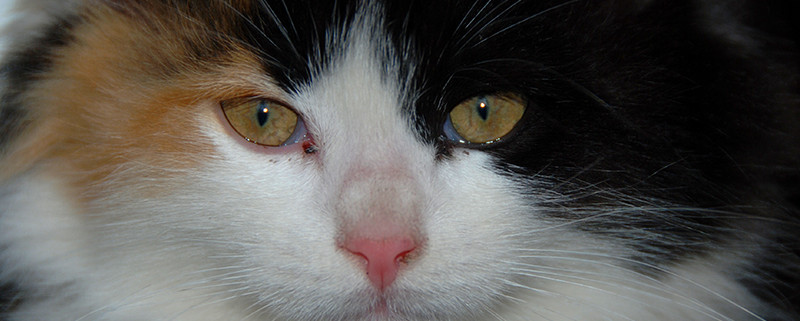Type II Diabetes Mellitus is a complicated, but common disease in adult cats. This disease causes the receptors in peripheral tissues to become resistant to insulin, regardless of how much is produced. Type II Diabetes is then referred to as non-insulin dependent. While Type II is more common in cats, usually by the time the disease is recognized they have become insulin-dependent as well.
When a cat eats, its body metabolizes the food into glucose which travels through the bloodstream to the tissues where it is used for energy. Excessive sugar in the blood (hyperglycemia) results from glucose not being utilized even though it is still being produced. Since the peripheral tissue is not using the glucose, the cat becomes hyperglycemic and throws off the balance of fluid in the body causing the increased drinking, urinating, and then dehydration. As the satiety center of the brain does not use the glucose, it does not let the cat know when she is full so she continues to eat. However, calories are lost due to unused glucose being excreted in the urine, causing many diabetic cats to lose weight. Untreated, Diabetes Mellitus can develop in to Ketoacidotic Diabetes because fat enzymes are usually regulated by insulin. Fat metabolism converts nonesterified fatty acids into acetyl coenzyme A. Acetyl CoA builds up and the liver generates ketones in the blood. Too many ketones and lactic acid in the blood cause a loss of electrolytes leading to dehydration, metabolic acidosis and shock.
Cats with uncomplicated Diabetes present with excessive drinking, urinating, gait abnormalities, and/or gastrointestinal disorders. Also, the high level of glucose in both blood and urine creates a comfortable environment for bacteria making it easy for the cat to develop secondary infections such as an UTI. The mouth is another common place for infection, especially if the cat’s teeth are covered in tartar. Infection typically causes a fever making the cat want to cuddle up to a heater. It is important to give antibiotics to get rid of infection when treating diabetes because the bacteria can prevent insulin consistency. Other common clinical signs of diabetes are altered appetite, poor coat condition, lethargy and depression. A cat’s systems being depressed can affect lung activity and labored breathing.
To treat a cat with Type II Diabetes, her diet should be a consistent 60 – 70 Kcal/kg/day, and reduced to 60-70% over a 2 to 4 month period to help her lose weight. Increased dietary fiber is good because it slows glucose absorption from the intestines and reduces hyperglycemia. Special diabetic formula cat foods are available to best suit her nutritional needs. The feeding and insulin schedule needs to be regulated so that she gets several small meals during the day to minimize hyperglycemia. Pet parents should also try to increase their cat’s exercise because it will help her lose weight and reduce her insulin resistance.
Insulin injections are given to replace the insulin that is not produced by the cat’s pancreas. The injections are given at regular 12 hour intervals. Beef insulin is most similar to cat insulin and is generally the source for feline injections. They can have their food available to nibble throughout the day.
Various alternative therapies for animals with diabetes are available. Ginseng has shown some glucose-lowering effects in after-meal blood glucose levels. Acupuncture is also used to stimulate the body’s natural pain-killers to relieve chronic pain caused by nerve damage in diabetic patients.
Vanadium and Chromium are transition metal elements that have properties similar to insulin. Type II Diabetes can be improved by orally giving these elements because they stimulate the peripheral tissues to take in glucose the way insulin would. By providing these metals you can prevent the cat’s pancreas from depleting its insulin stores as well as not lowering blood glucose. By decreasing blood glucose, polydipsia and polyuria are alleviated. Side effects can include anorexia or vomiting.
Studies
Animal models of disease: classification and etiology of diabetes in dogs and cats.
Normal glucose metabolism in carnivores overlaps with diabetes pathology in non-carnivores.
Animal models of diabetic retinopathy: summary and comparison.
Prevalence and risk factors for the development of diabetes mellitus in Swedish cats.
The cat as a model for human obesity and diabetes.
Monitoring methods for dogs and cats with diabetes mellitus.

